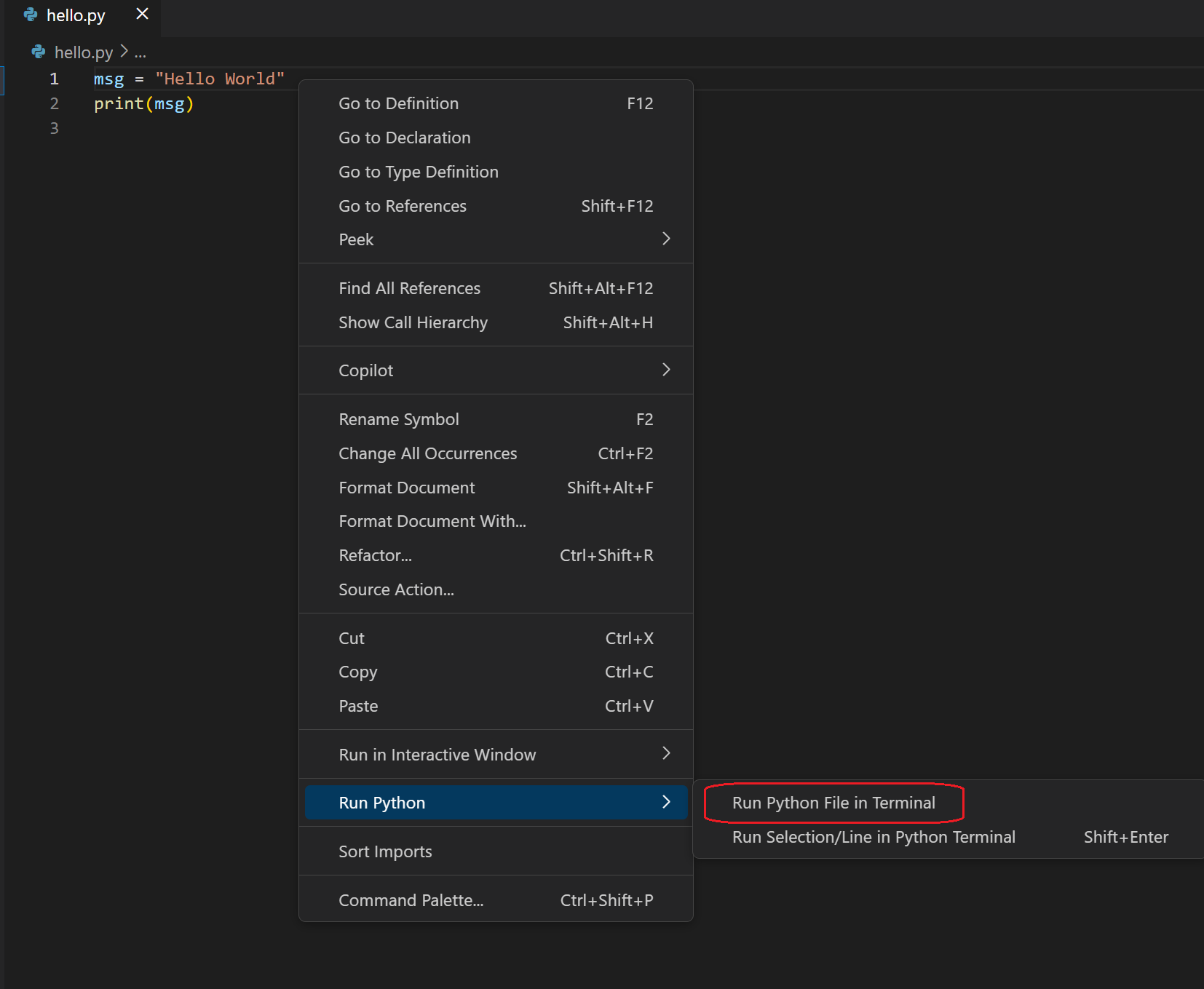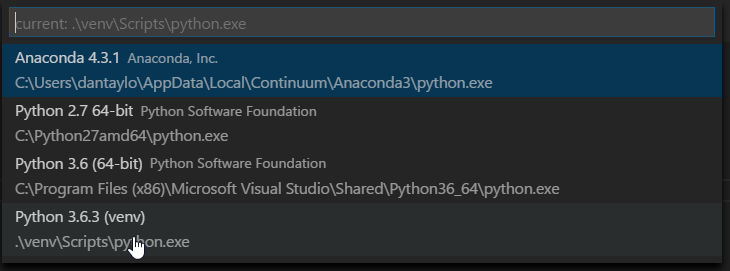By default the extension uses the Python interpreter available in the current path. You could always change this by specifying the path to the interpreter in the user or worksapce settings.
Kite is an AI-powered programming assistant that helps you write Python code inside Visual Studio Code. The Kite Engine needs to be installed in order for the extension to work properly. The extension itself provides the frontend that interfaces with the Kite Engine, which performs all the code analysis and machine learning. Visual Studio Code (VSC) is a free cross-platform source code editor. The Python for Visual Studio Code extension allows VSC to connect to Python distributions installed on your computer. Since Visual Studio Code can use whichever version of Python in your system, you need to install modules for that specific version used. Once you realize this, solution is straightforward, just install module with pip using the same version of Python chosen as interpreter (Figure 2) using directly python.exe correct version as shown in Figure 3.

Environment data VS Code version: 1.29.1 Extension version (available under the Extensions sidebar): 2018.11.0 OS and version: Windows 10 Pro Python version (& distribution if applicable, e.g. Anaconda): 3.7 (32-bit) Actual behavior I do. This is because the Python interpreter is not selected for VSCode, and the Python extension of VSCode cannot identify the Python code through it. The Python interpreter in VSCode refers to the Python that recognizes and interprets code, which needs to be installed outside of VSCode.
Selecting an interpreter
Configuring the extension to use a particular interpreter is now easy.All you now need to do is make use of the command Select Workspace Interpreter from the command palette and select an interpreter from the list.If the interpreter you are looking for isn’t listed here, then please proceed to the next section and enter it manually. Free mind download for mac.
Manual Configuration
Python Version used for Intellisense, Autocomplete, Linting, Formatting, etc
The same python interpreter is used for intellisense, autocomplete, linting, formatting, etc. (everything other than debugging). The standard interpreter used is the first “python” interpreter encountered in the current path.
If a specific version is to be used, then configure the path to the python interpreter in the User or Workspace Settings file (settings.json) as follows.
Ensure to specify the fully qualified name of the python executable (Mac and Linux supported).
Virtual Environments
There are two approaches to to getting this extension working in a particular Virtual Environment.

Option 1: Ensure the path to the python interpreter is set in python.pythonPath as defined previously.
Note: Do remember to configure the pythonPath in launch.json as well.
Finally, restart VS Code, necessary for intellisense to work (future release will not require a restart)
Ensure the libraries/modules you plan on using for linting are also installed within this virtual environment.
Option 2: Activate the Virtual Environment from your Terminal/Command Window and then launch VS Code.
- Ensure none of the Python paths are configured in the settings.json file (leave them to their defaults).
- Open your terminal (command) window and activate the relevant Python environment
- Close all instances of VS Code
- Next, launch VS Code from that same terminal (command window) session

Python Version used for debugging
Details on configuration settings for debugging can be found here Debugging.
Configuring the version of the python executable is no longer necessary.
Provided the setting python.pythonPath in settings.json (see above) has been configured correctly, the debugger will use this same setting.
Vs Code Python Path

Goldwave for mac. This is made possible by setting the value of the pythonPath setting to ${config.python.pythonPath}. I.e. the debugger merely references the pythonPath setting from the settings.json file.
Relative Paths to Python Interpreter
Unfortunately use of relative paths when configuring the interpreter in settings.json will not work with the debugger. Hence the solution is to provide the fully qualified path.This could be achieved with the use of simple variables such as the following:
Where ${workspaceRoot} resolves to the current work space (project) directory.
Environment Variables
Visual Studio Code Python Virtual Environment
Similar to the use of ${workspaceRoot}, environment variables could be used in configuring the path to the python interpreter.Where ${env.PYTHONPATH} resolves to the value of the environment variable xyz.
